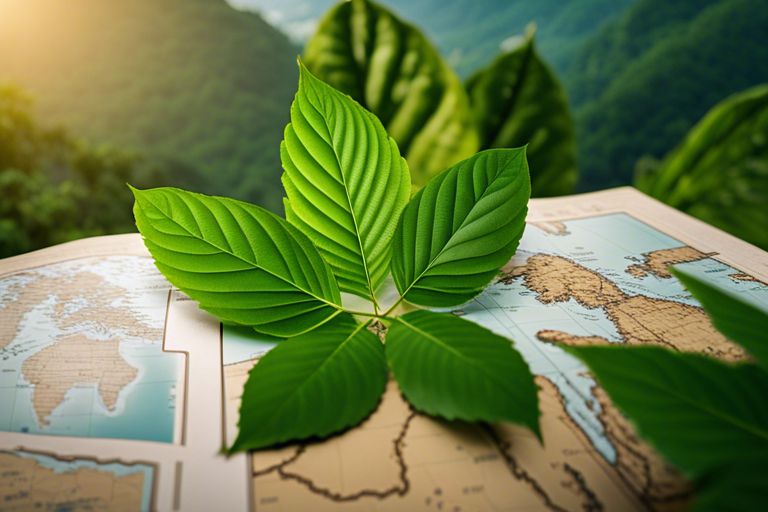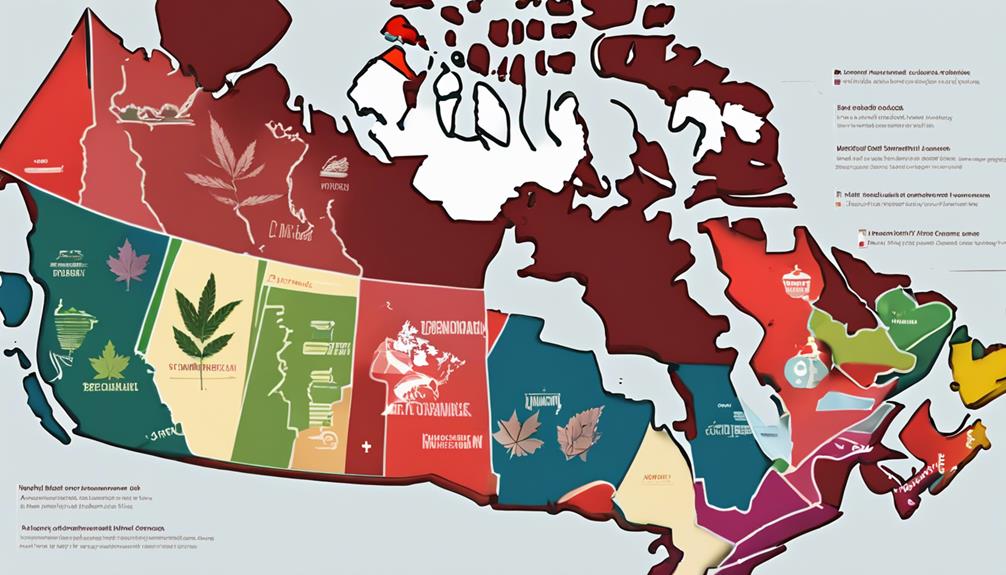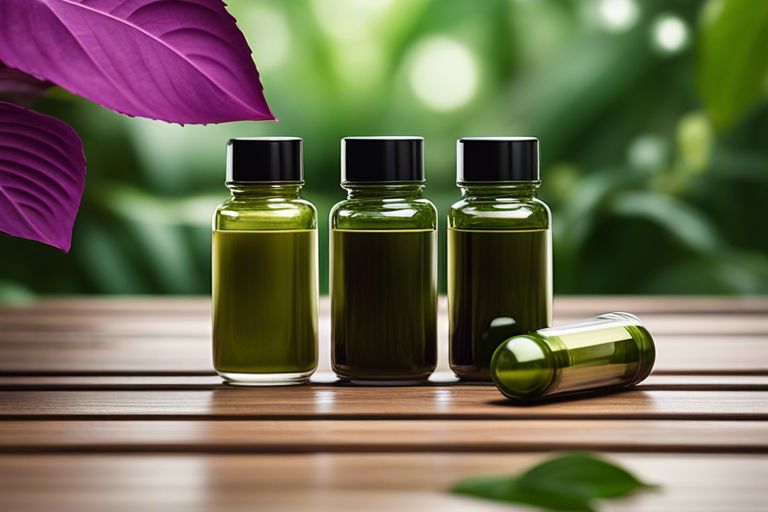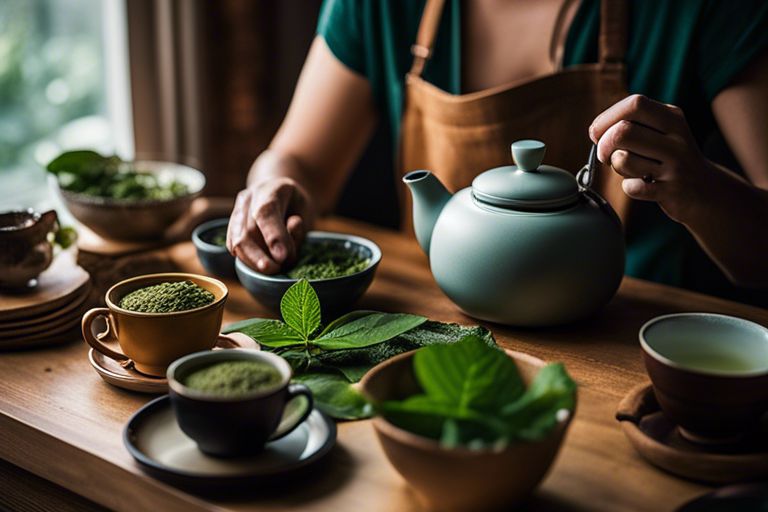Source: Originating from the tropical regions of Southeast Asia, kratom comes from the lush, evergreen Mitragyna speciosa tree. This natural plant has gained popularity for its potential medicinal and recreational uses. Exploring the roots and history of kratom can unveil a fascinating journey. For a deeper explore the subject, check out Following “the Roots” of Kratom (Mitragyna speciosa).
Key Takeaways:
- Kratom originates from Southeast Asia: Kratom, a tropical evergreen tree, is native to countries like Thailand, Malaysia, Indonesia, and Papua New Guinea.
- Traditional Use: Indigenous cultures in Southeast Asia have historically used kratom leaves for medicinal and recreational purposes.
- Global Popularity: In recent years, kratom has gained popularity worldwide for its potential health benefits, leading to increased cultivation and trade.
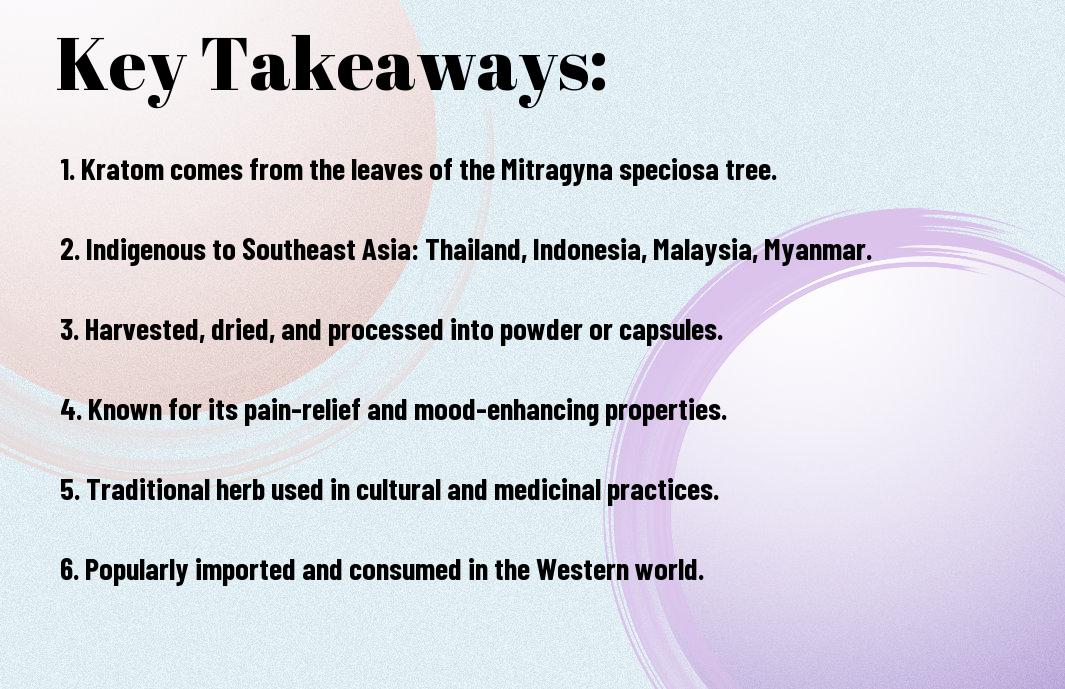
The Origins of Kratom
While kratom is gaining popularity in Western countries, its origins can be traced back to Southeast Asia, where it has been used for centuries by indigenous communities for its various medicinal and recreational properties.
History of Kratom Use
History reveals that kratom has been traditionally consumed by laborers and farmers in Southeast Asia to boost energy levels and combat fatigue. The plant’s leaves contain compounds that interact with the body’s receptors, producing stimulating effects at low doses and sedative effects at higher doses. This unique dual nature of kratom has made it a popular choice for a wide range of purposes.
Early Records of Kratom Cultivation
To understand the early history of kratom cultivation, we need to research into ancient texts and accounts that mention the use of this plant in the regions where it grows naturally. Records suggest that kratom trees were cultivated and harvested by local communities in countries like Thailand, Malaysia, and Indonesia for generations.
It is important to note that while kratom has a long history of traditional use in Southeast Asia, its legality and regulation vary in different parts of the world. Some regions have strict laws governing the sale and consumption of kratom due to its potential risks and abuse potential. However, many people advocate for the plant’s therapeutic benefits and continue to use it in a responsible manner.
Southeast Asian Roots
Kratom’s Native Habitat
Any journey to understand the origins of kratom must begin in its native habitat – the lush rainforests of Southeast Asia. Here, the kratom tree, scientifically known as Mitragyna speciosa, thrives in the tropical climates of countries like Thailand, Malaysia, Indonesia, and Papua New Guinea.
Traditional Kratom-Producing Countries
The native peoples of Southeast Asia have been cultivating and using kratom for centuries, incorporating it into their traditional customs and cultural practices. Thailand and Malaysia are two of the most prominent countries where kratom has enjoyed a long history of use.
Asian Natives in these countries have traditionally used kratom for its stimulating and pain-relieving properties. In Thailand, kratom leaves are commonly chewed or brewed into tea to combat fatigue and enhance productivity, while in Malaysia, it has been used to manage pain and improve mood.
Regional Variations of Kratom
The diverse climates and growing conditions across Southeast Asia have given rise to regional variations in kratom strains, each with its unique blend of alkaloids and effects. For example, Thai kratom is known for its energizing properties, while Bali kratom is prized for its relaxing and analgesic effects.
To truly understand kratom, one must appreciate the rich tapestry of cultures and traditions that have shaped its history and use in Southeast Asia. From the bustling markets of Bangkok to the serene villages of Malaysia, kratom’s roots run deep in the fabric of this region.
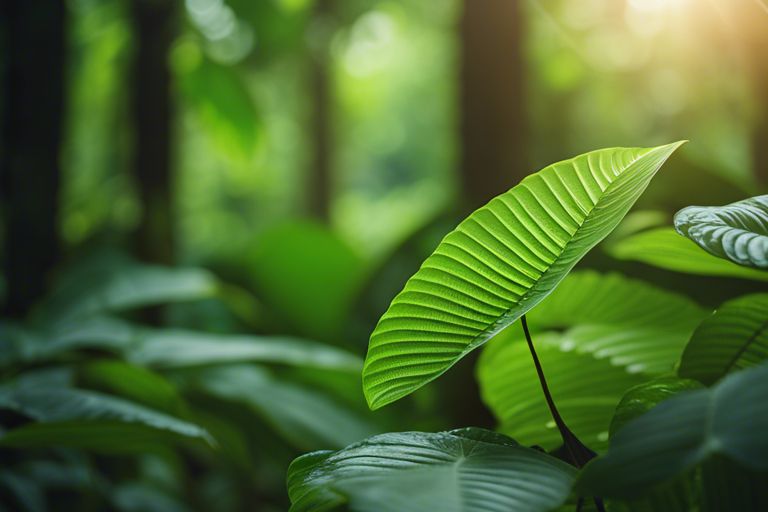
Kratom Production and Harvesting
Farming and Cultivation Methods
Harvesting of kratom leaves typically takes place in Southeast Asia, where the tree is native. Farmers use traditional methods to cultivate kratom trees, often planting them in nutrient-rich soil in tropical climates. The trees require ample sunlight and water to thrive, and skilled farmers carefully tend to their growth.
Leaf Harvesting and Processing
For some varieties of kratom, the most potent leaves are found at the top of the tree. Harvesters carefully select these leaves, avoiding the lower-quality ones found lower on the tree. Once harvested, the leaves are dried and processed using traditional methods to preserve their alkaloid content and potency.
Leaf harvesting and processing are crucial steps in ensuring the quality of kratom products. The process must be carried out expertly to maintain the potency and efficacy of the leaves. Skilled harvesters know the perfect time to pick the leaves and the best way to process them to create high-quality kratom products.
Quality Control Measures
Processing facilities that handle kratom follow strict quality control measures to ensure the safety and purity of the final products. This includes testing the leaves for contaminants, such as heavy metals and pesticides, and adhering to Good Manufacturing Practices (GMP) guidelines to maintain high standards of production.
Understanding the importance of quality control measures in the production of kratom is crucial for both producers and consumers. By implementing rigorous testing and quality assurance protocols, producers can guarantee the purity and safety of their products, protecting consumers from harmful substances and ensuring the efficacy of the kratom.
Major Kratom-Producing Countries
Indonesia: The Largest Kratom Producer
Your journey to discover where kratom comes from wouldn’t be complete without acknowledging Indonesia as the largest producer of this botanical marvel. Indonesia boasts a climate that is perfect for growing kratom trees, with lush rainforests and fertile soil providing the ideal conditions for cultivation. The regions of Borneo and Sumatra in Indonesia are renowned for producing some of the most potent and sought-after kratom strains in the world.
Malaysia: A Significant Kratom Producer
For those curious about the origins of kratom, Malaysia is a significant player in the global kratom market. The Southeast Asian country is known for its diverse range of kratom varieties, each with its own unique properties and effects. Malaysian kratom is highly regarded for its quality and potency, making it a popular choice among kratom enthusiasts around the world.
Major advancements in kratom cultivation and processing have established Malaysia as a key player in the industry, with exports of kratom products contributing significantly to the country’s economy.
Thailand: A Historical Kratom Producer
With a rich history of kratom use dating back centuries, Thailand holds a special place in the world of kratom production. The country’s unique climate and fertile soil create the perfect environment for growing high-quality kratom trees. Thai kratom is revered for its potent alkaloid profile, delivering a range of effects that have made it popular among users worldwide.
Thailand’s longstanding relationship with kratom has shaped its cultural practices and traditions, with kratom playing a significant role in various rituals and ceremonies in the country.
Countries like Indonesia, Malaysia, and Thailand play a crucial role in the global kratom industry, supplying high-quality and diverse kratom strains to meet the growing demand from consumers worldwide.
Kratom Trade and Export
Not only consumed locally in its native regions, kratom has gained popularity globally in recent years. The trade and export of kratom have increased significantly, with a growing demand for the product in various parts of the world.
Global Kratom Market Trends
Market trends show a rising interest in kratom products due to their potential medicinal benefits and recreational uses. The global kratom market is expanding, with more countries importing and selling kratom products to meet consumer demand.
Import and Export Regulations
Export regulations for kratom vary between countries, with some nations having strict controls on the trade of this plant. Regulations may include restrictions on the amount of kratom that can be exported, as well as quality control measures to ensure the safety of the product.
Regulations governing the import and export of kratom aim to prevent the illegal trade and ensure that the product meets certain standards for consumption. It’s imperative for exporters to comply with these regulations to avoid any legal issues and maintain the integrity of the kratom supply chain.
Challenges in the Kratom Supply Chain
The challenges in the kratom supply chain include issues such as sourcing sustainable kratom, maintaining quality standards during processing and packaging, and ensuring secure transportation to international markets. These challenges can impact the overall quality and reputation of kratom products.
It is crucial for stakeholders in the kratom industry to address these challenges collaboratively to ensure a sustainable and ethical supply chain for this valuable plant.
Sustainability and Environmental Impact
Deforestation and Habitat Destruction
Environmental advocates are concerned about the impact of kratom cultivation on natural habitats in Southeast Asia. The increasing demand for kratom has led to deforestation in some regions, destroying the natural habitat of various plant and animal species. This deforestation poses a threat to biodiversity and contributes to climate change.
Sustainable Kratom Farming Practices
On the flip side, there are efforts to promote sustainable kratom farming practices. Some farmers are adopting organic cultivation methods, agroforestry techniques, and replanting initiatives to minimize their environmental impact. Sustainable practices aim to preserve the ecosystem while meeting the demand for kratom.
Habitat Conservation Efforts
Environmental Conservation Efforts
Conservation organizations are working to protect the natural habitats affected by kratom cultivation. They are educating farmers about sustainable practices, promoting reforestation projects, and partnering with local communities to preserve biodiversity. These efforts aim to balance the economic benefits of kratom with the need to protect the environment.
Environmental awareness and conservation efforts are crucial in ensuring the long-term sustainability of kratom production. By implementing sustainable farming practices and supporting conservation initiatives, we can enjoy the benefits of kratom without causing irreparable harm to the environment.
Conclusion
As a reminder, kratom is a plant native to Southeast Asia, particularly Thailand, Malaysia, Indonesia, and Papua New Guinea. This traditional herb has gained popularity in the Western world for its potential medicinal benefits, but it also comes with risks. Science is still uncovering the full extent of these risks and benefits, as discussed in a recent article on Kratom: What science is discovering about the risks and benefits of a controversial herb.
In the final analysis, the origins of kratom trace back to its long history of use in traditional practices in Southeast Asia. This plant continues to spark interest and controversy in the modern world, prompting researchers to research deeper into its properties. As we learn more about where kratom comes from and its potential effects, it is vital to approach its use with caution and respect for its powerful nature.
FAQ
Q: What is kratom?
A: Kratom is a tropical evergreen tree native to Southeast Asia, belonging to the coffee family.
Q: Where does kratom come from?
A: Kratom originates from countries such as Thailand, Indonesia, Malaysia, Myanmar, and Papua New Guinea.
Q: How is kratom harvested?
A: Kratom leaves are handpicked from mature trees, dried in sunlight, and then processed into various forms such as powder or capsules.
Q: What are the traditional uses of kratom?
A: In its native regions, kratom has been traditionally used for its stimulant and pain-relieving properties, as well as for ceremonial purposes.
Q: What are the active components in kratom?
A: The primary active components in kratom are mitragynine and 7-hydroxymitragynine, which interact with opioid receptors in the brain to produce various effects.
